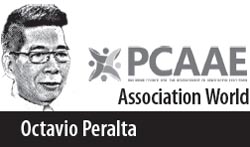
ALMOST 30 years have passed since I participated in the AOTS Executive Program on Corporate Management (EPCM) in Tokyo so I was pleasantly surprised when I received an invitation from the AOTS to attend the EPCM, this time a three-hour hybrid event.
Established on August 10, 1959, the Association for Overseas Technical Cooperation and Sustainable Partnerships (AOTS) is a Japanese government-supported organization for human resources development to promote technical cooperation through training, expert dispatch, and other programs in developing countries.
The EPCM is an instructor-facilitated case study method discussion-type course, one of the longest-running programs of AOTS that started 38 years ago in 1983. Its lead speaker and program director is Dr. Tsuneo Yahagi, Ph.D., professor emeritus of Keio University. It was a happy virtual reunion for both of us.
The program, “Innovation and Entrepreneurship,” covered two case studies—the Fuji Film-Kodak success-failure story and the early-year exploits of Sony, Honda, Toyota, and Nissan before they became household names. The ‘DNA’ lessons from these case studies are also applicable to associations, and these are as follows:
Diversification—Fuji Film and Kodak had contrasting fates. Fuji Film was able to weather the disruption in the photo printing and camera industry while Kodak did not. It was the ability to diversify into other businesses that was key to Fuji’s survival and growth. In the context of associations, diversification in terms of products and services as well as in revenue sources should be a strategic consideration. By continuously innovating on programming activities relevant to members and by not relying solely on membership dues subscription can spell the difference between sustainability and demise. Associations need their members’ support, as well as financial resources, to be able to fulfil their mission.
Novelty, new markets—In the 1960s, Sony and Honda were unknown brands outside Japan and struggled to compete in markets already dominated by big players. In those days, Sony’s Walkman, its pocketable radio, and Honda’s Super Cub, its cute, 50cc motorcycle were both novelty products that got a boost from a youthful market. These products were not only considered fun and affordable, but also reliable. These days, associations confronted by competition from non-traditional providers of similar knowledge services, mostly internet-based, e.g. training programs, publications, etc., have also struggled to maintain relevance to their members. It could help associations if they stick to their purpose, engage with millennials, and develop new fit-for-purpose services their members need in solving their problems, advancing their careers, and promoting their advocacies.
Accelerated unserved market development—Toyota and Nissan’s early-stage strategy of tapping the unserved market of small and economical vehicles enabled them to progress later into the medium and upmarket transportation business. In like manner, associations can explore looking to expand their membership base, for example, by attracting students, retired professionals, suppliers, and allied stakeholders via a compelling value proposition.
The three “DNA” factors above used by well-known Japanese companies as strategies could also be a genetic code for associations to survive and thrive.
The column contributor, Octavio ‘Bobby’ Peralta, is concurrently the secretary-general of the Association of Development Financing Institutions in Asia and the Pacific, Founder & CEO of the Philippine Council of Associations and Association Executives and President of the Asia-Pacific Federation of Association Organizations. The purpose of PCAAE—the “association of associations”—is to advance the association management profession and to make associations well-governed and sustainable. PCAAE enjoys the support of Adfiap, the Tourism Promotions Board, and the Philippine International Convention Center. E-mail: [email protected]
Read full article on BusinessMirror
